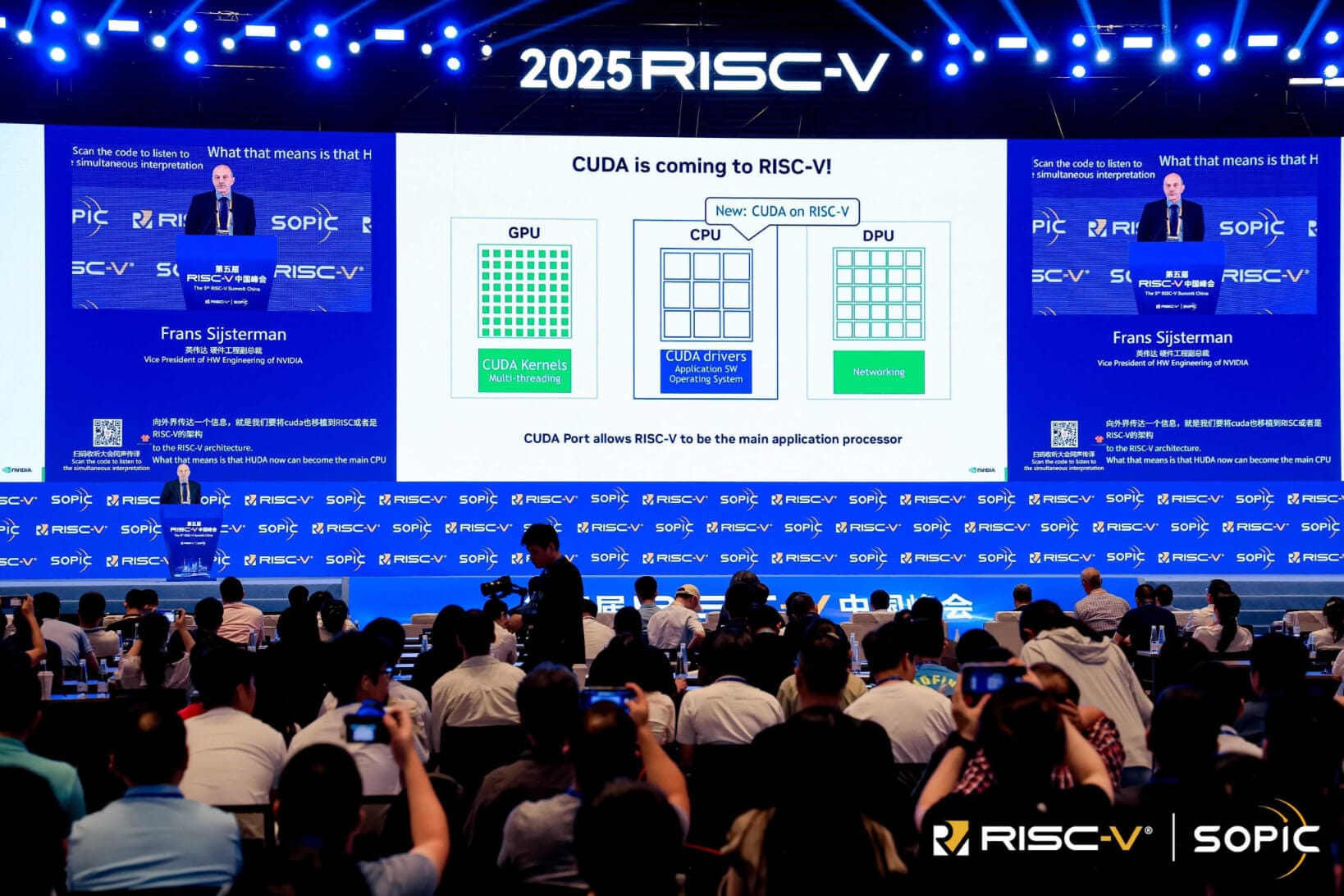
We all know NVIDIA, the company powering everything from gaming to high-end AI workloads. Its CUDA platform has become the backbone of accelerated computing, and if you’re working in the field of machine learning, you’ve almost definitely run something on CUDA, directly or indirectly.
On the other hand, RISC-V (prononunced risk-five) is an open standard, maintained by RISC-V International. Unlike x86 or ARM, this architecture is free to use and modify, making it attractive to companies and countries looking to build custom chips without licensing restrictions.
At the RISC-V Summit China event a few days ago, the two came together to share a major announcement that could shake up the high-performance computing space.
CUDA Comes to RISC-V

Announcing this development on their official X account, RISC-V International has revealed that CUDA support is coming to RISC-V. This was made possible via a port that allows RISC-V CPUs to handle system drivers and app logic while working in tandem with NVIDIA GPUs in CUDA AI setups.
This means RISC-V processors can act as the main host running the operating system and CUDA drivers, offloading compute-heavy tasks to NVIDIA GPUs. It opens the door to building AI systems with open CPU architectures paired with NVIDIA’s powerful GPU acceleration.
The announcement reads:
Exciting news from #RISCVSummitChina, as Frans Sijstermans from NVIDIA announces CUDA is coming to RISC-V! This port will enable a RISC-V CPU to be the main application processor in a CUDA-based AI system.
If I were to speculate, this move could be a game-changer for edge offerings like NVIDIA’s Jetson platform, potentially replacing x86 or ARM cores with RISC-V processors. It also opens up new possibilities for data centers and HPC systems built on RISC-V.
Chinese chipmakers, who are already investing heavily in RISC-V, stand to gain as well. CUDA compatibility lets them develop AI hardware without depending on Western manufacturers, helping reduce supply chain and licensing headaches.
Plus, this move is especially notable given how tense U.S.-China relations were just weeks ago. Still, you never know when it comes to geopolitics. Things can shift quickly.
Suggested Read 📖

- Even the biggest players in the Linux world don't care about desktop Linux users. We do.
- We don't put informational content behind paywall. Your support keeps it open for everyone. Think of it like 'pay it forward'.
- Don't like ads? With the Plus membership, you get an ad-free reading experience.
- When millions of AI-generated content is being published daily, you read and learn from real human Linux users.
- It costs just $2 a month, less than the cost of your favorite burger.
Become a Plus Member today and join over 300 people in supporting our work.










